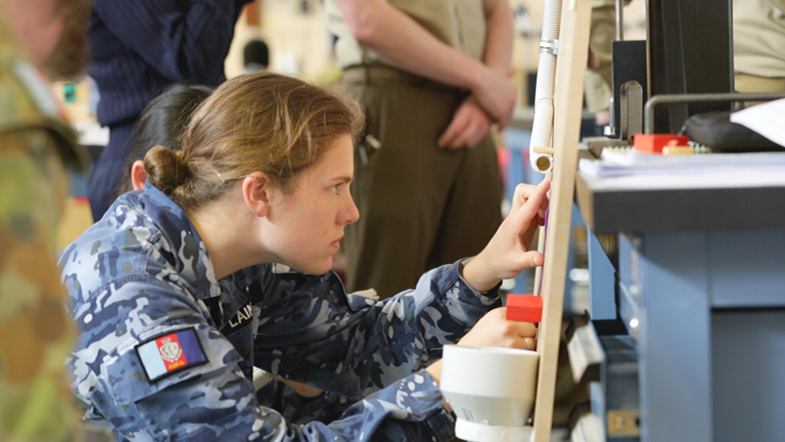Rube Goldberg lab puts engineering skills to the test
We’ve all seen a Rube Goldberg machine – a machine that uses a chain reaction to accomplish a simple task.
We’ve all seen a Rube Goldberg machine – a machine that uses a chain reaction to accomplish a simple task.

We’ve all seen a Rube Goldberg machine – a machine that uses a chain reaction to accomplish a simple task.

Charlotte Watts, a fourth-year aeronautical engineering student at UNSW Canberra, thought creating one of these machines would be a good opportunity for engineering students to put what they have learnt into practice.
The Air Force Trainee Officer designed and built a lab as part of her thesis work and it is being used as an assessable item for first-year engineering students.
“I thought this sort of activity could be really beneficial for students studying dynamics – a hands-on, very creative way of learning,” Charlotte said.
“What I’m hoping to research is how beneficial this practical hands-on learning is to the students’ understanding of the underlying concepts in class.”
The inspiration came from one of the more elaborate examples of a Rube Goldberg machine, the music video for OK Go’s This Too Shall Pass, which has been watched by more than 60 million people on YouTube.
In the classroom rendition, students used mousetraps, balloons and a peg board to transport a ball from A to B.
It was more than trial and error. They also had to provide the equations that explained how the mechanisms worked.
“The main thing that they’ve learnt is how you can make an incredible engineering feat and not have it work,” Charlotte said.
“Something simple that works is better than something complicated that doesn’t work.”
Aeronautical engineering student Imogen Laing said it was a nice change from the usual class activities.
“It was really fun working in a team because a lot of what we do is by ourselves,” Imogen said.
“Everyone had their own little contributions to the ideas, made modifications to other people’s, it was a really collaborative process.”

Related stories: